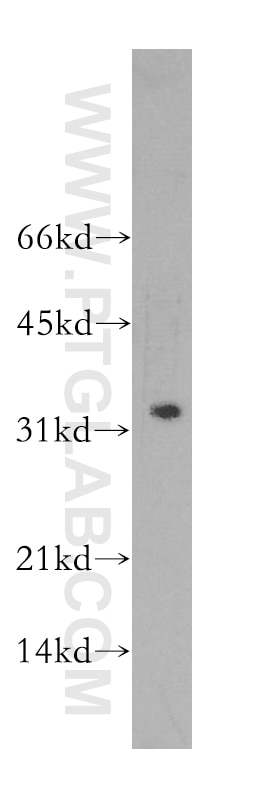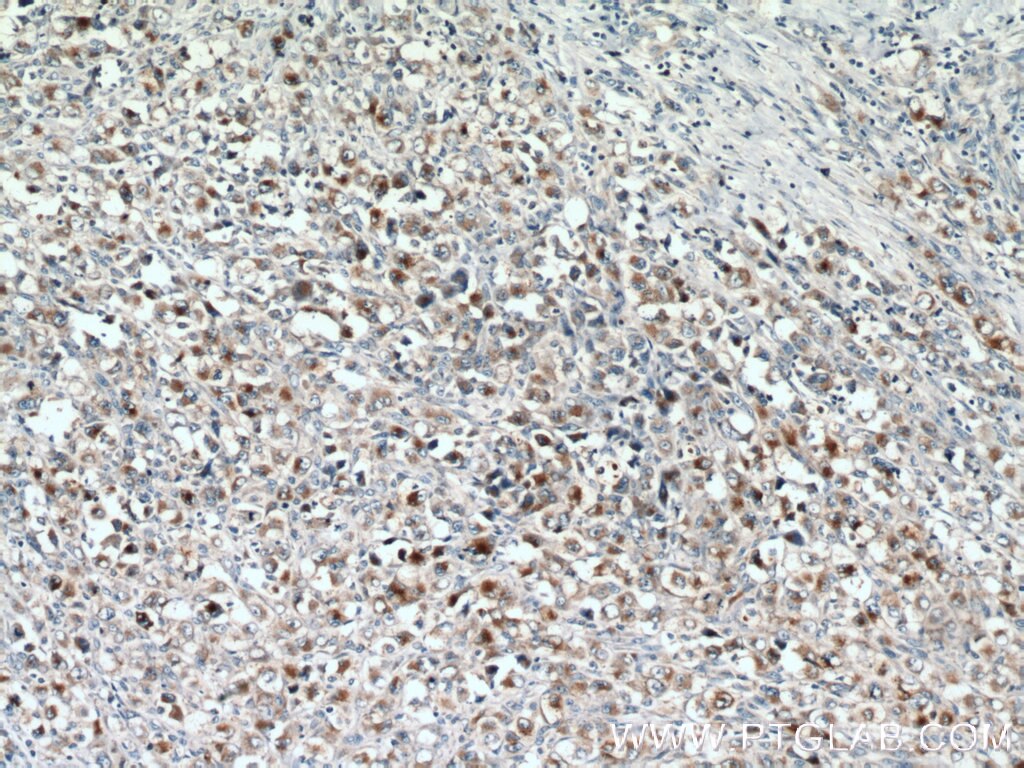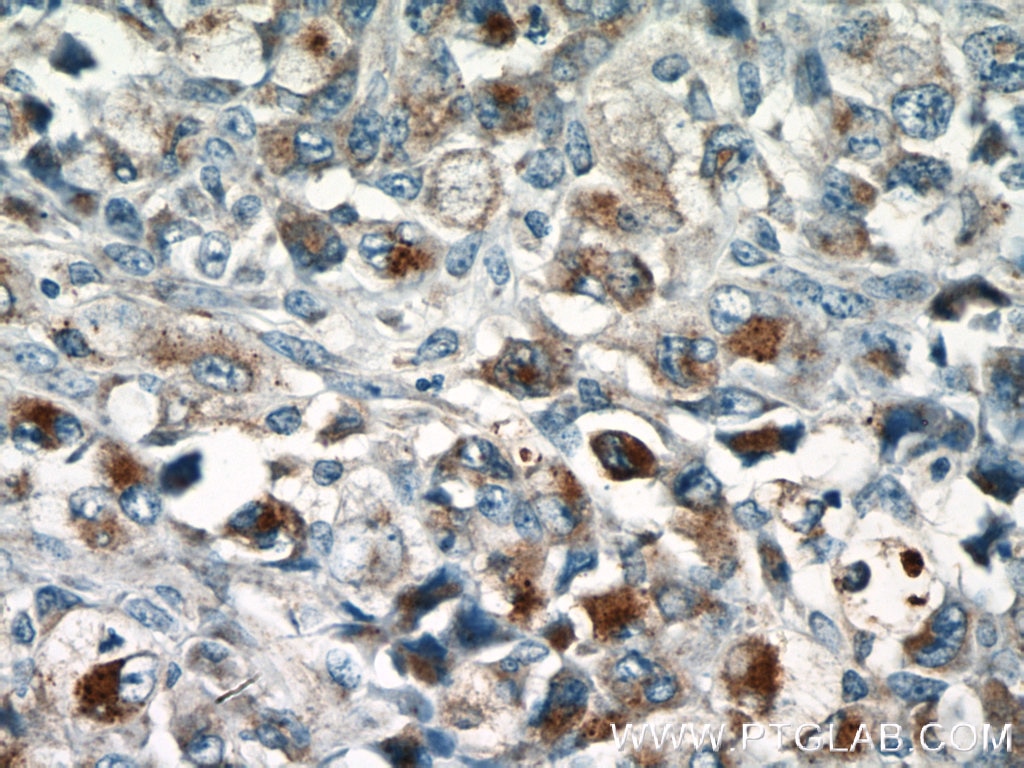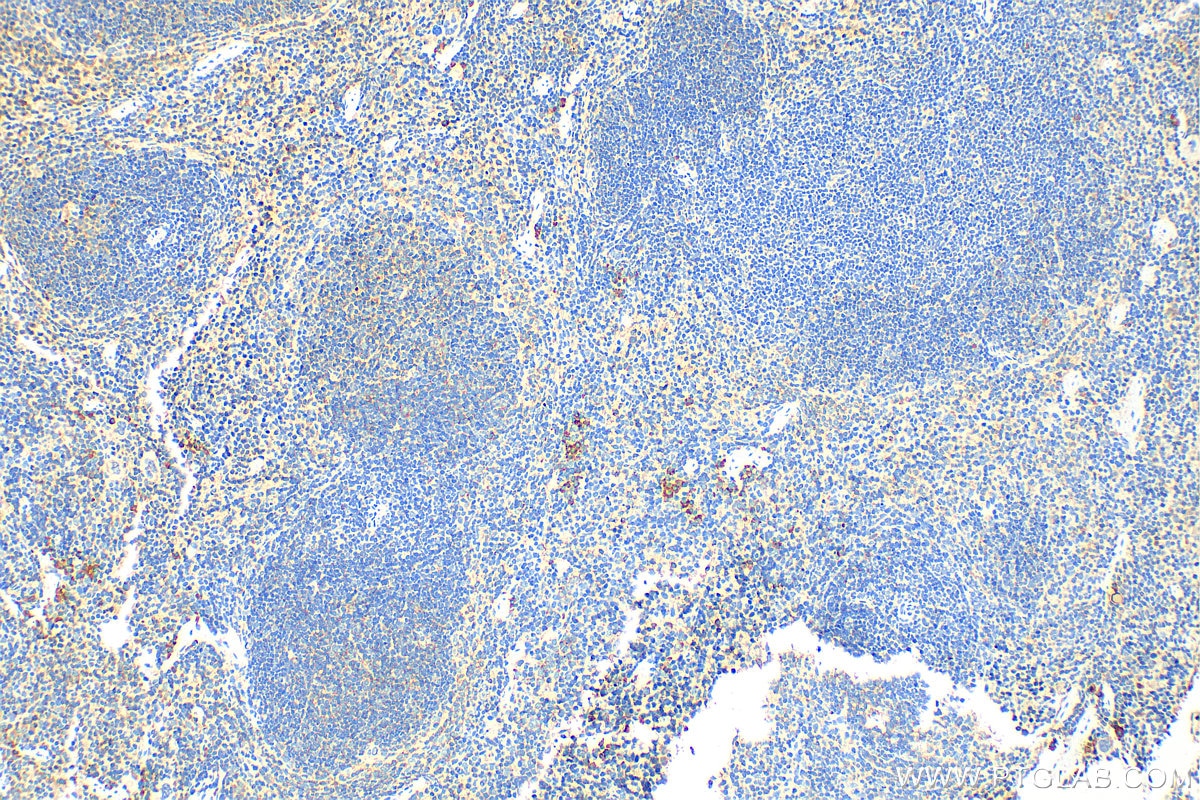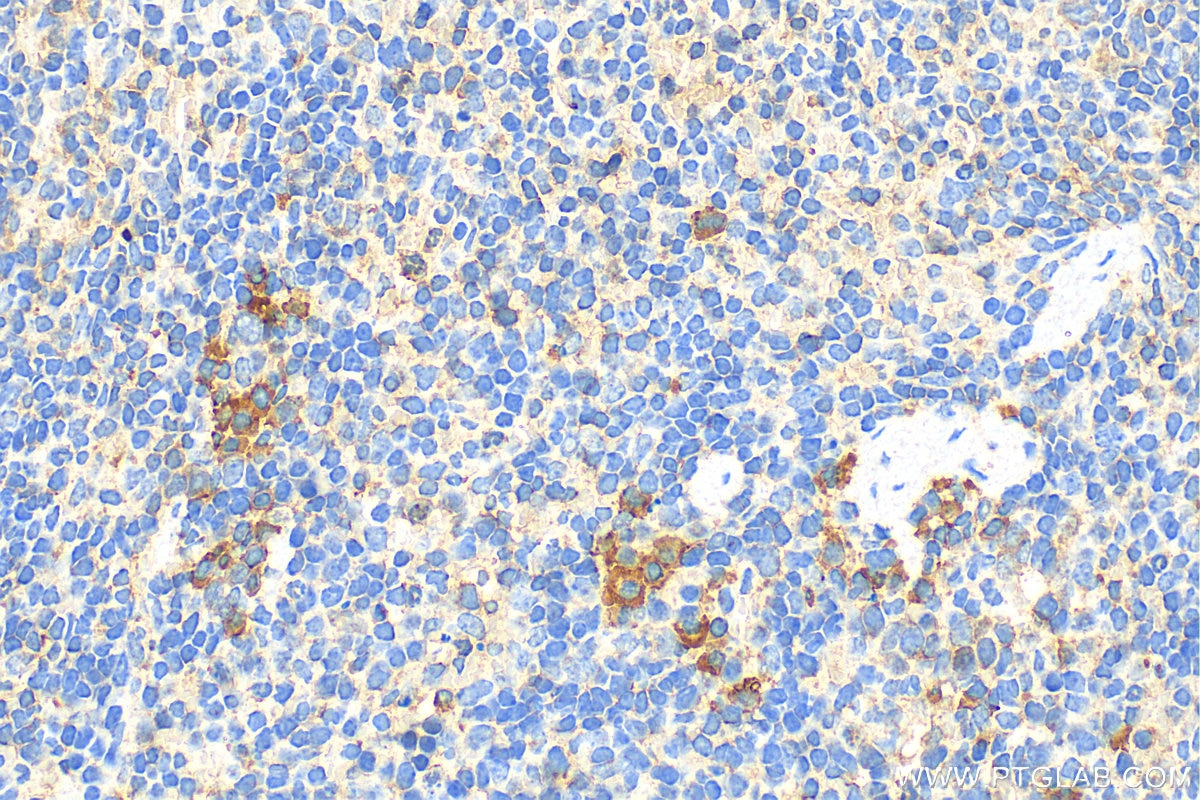Anticorps Polyclonal de lapin anti-Granzyme B
Granzyme B Polyclonal Antibody for WB, IHC, ELISA
Hôte / Isotype
Lapin / IgG
Réactivité testée
Humain, souris et plus (1)
Applications
WB, IHC, IF, ELISA
Conjugaison
Non conjugué
N° de cat : 13588-1-AP
Synonymes
Galerie de données de validation
Applications testées
| Résultats positifs en WB | cellules HL-60 |
| Résultats positifs en IHC | tissu de lymphome humain, tissu splénique de souris il est suggéré de démasquer l'antigène avec un tampon de TE buffer pH 9.0; (*) À défaut, 'le démasquage de l'antigène peut être 'effectué avec un tampon citrate pH 6,0. |
Dilution recommandée
| Application | Dilution |
|---|---|
| Western Blot (WB) | WB : 1:500-1:2000 |
| Immunohistochimie (IHC) | IHC : 1:50-1:500 |
| It is recommended that this reagent should be titrated in each testing system to obtain optimal results. | |
| Sample-dependent, check data in validation data gallery | |
Applications publiées
| KD/KO | See 1 publications below |
| WB | See 11 publications below |
| IHC | See 28 publications below |
| IF | See 13 publications below |
Informations sur le produit
13588-1-AP cible Granzyme B dans les applications de WB, IHC, IF, ELISA et montre une réactivité avec des échantillons Humain, souris
| Réactivité | Humain, souris |
| Réactivité citée | rat, Humain, souris |
| Hôte / Isotype | Lapin / IgG |
| Clonalité | Polyclonal |
| Type | Anticorps |
| Immunogène | Granzyme B Protéine recombinante Ag3883 |
| Nom complet | granzyme B (granzyme 2, cytotoxic T-lymphocyte-associated serine esterase 1) |
| Masse moléculaire calculée | 247 aa, 28 kDa |
| Poids moléculaire observé | 33 kDa |
| Numéro d’acquisition GenBank | BC030195 |
| Symbole du gène | Granzyme B |
| Identification du gène (NCBI) | 3002 |
| Conjugaison | Non conjugué |
| Forme | Liquide |
| Méthode de purification | Purification par affinité contre l'antigène |
| Tampon de stockage | PBS with 0.02% sodium azide and 50% glycerol |
| Conditions de stockage | Stocker à -20°C. Stable pendant un an après l'expédition. L'aliquotage n'est pas nécessaire pour le stockage à -20oC Les 20ul contiennent 0,1% de BSA. |
Informations générales
GZMB(Granzyme B) is also named as CGL1, CSPB, CTLA1, GRB and belongs to the Granzyme subfamily. This enzyme is necessary for target cell lysis in cell-mediated immune responses. The cytotoxic lymphocyte protease granzyme B (GzmB) can promote apoptosis through direct processing and activation of members of the caspase family. GzmB can also cleave the BH3-only protein, BID, to promote caspase-independent mitochondrial permeabilization (PMID:17283187). GzmB induces laminB degradation in isolated nuclei less efficiently than GzmA (PMID:11331782). This full length protein has 2 glycosylation sites and a signal peptide. Unglycosylated human granzyme B is 26 kDa and high mannose glycosylated is 32 kDa and only 32kDa or smaller forms of granzyme B are accumulated within nuclei (PMID:8626751). GzmB also forms dimers.
Protocole
| Product Specific Protocols | |
|---|---|
| WB protocol for Granzyme B antibody 13588-1-AP | Download protocol |
| IHC protocol for Granzyme B antibody 13588-1-AP | Download protocol |
| Standard Protocols | |
|---|---|
| Click here to view our Standard Protocols |
Publications
| Species | Application | Title |
|---|---|---|
J Am Acad Dermatol Generalized bullous fixed drug eruption is distinct from Stevens-Johnson syndrome/toxic epidermal necrolysis by immunohistopathological features. | ||
Biomaterials In situ subcutaneously injectable thermosensitive PEG-PLGA diblock and PLGA-PEG-PLGA triblock copolymer composite as sustained delivery of bispecific anti-CD3 scFv T-cell/anti-EGFR Fab Engager (BiTEE). | ||
J Nanobiotechnology Oxygen-delivery nanoparticles enhanced immunotherapy efficacy monitored by granzyme B PET imaging in malignant tumors | ||
Oncogene B7-H4 is increased in lung adenocarcinoma harboring EGFR-activating mutations and contributes to immunosuppression. | ||
Clin Transl Med c-Myb facilitates immune escape of esophageal adenocarcinoma cells through the miR-145-5p/SPOP/PD-L1 axis. |
